If you’ve ever walked into a museum or a high-end antique shop, you might have paused in awe at a piece of delicate porcelain adorned with intricate blue designs. That is likely Ming porcelain, a true testament to centuries of Chinese craftsmanship. But what makes Ming Dynasty porcelain so captivating? Let’s dive into the story behind these timeless treasures.
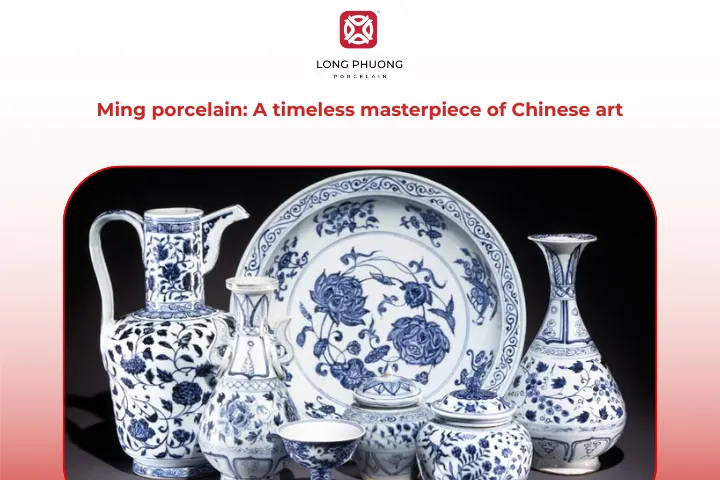
1. What is a Ming presentation porcelain?
Ming presentation porcelain was a variety of high-quality Chinese porcelain. They were used as gifts in diplomatic exchanges during the Ming Dynasty. In Thailand and across Southeast Asia, many Chinese ceramics have been found, including pieces that closely resemble Ming official ware in their dragon and phoenix motifs, quality materials, and skilled craftsmanship.
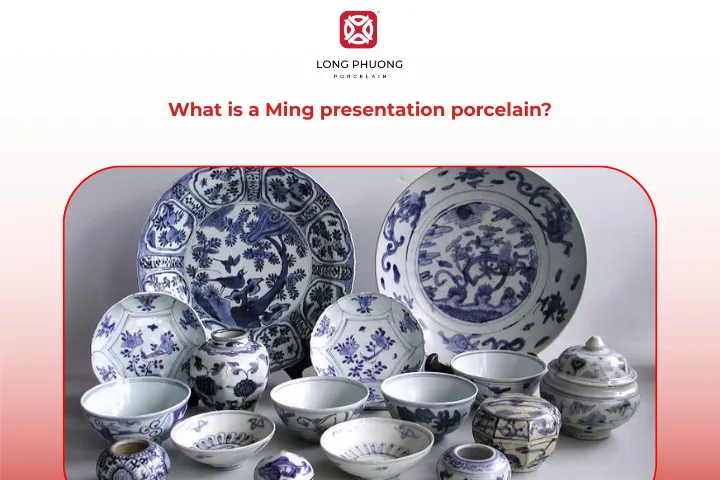
2. The history of Ming porcelain
In 1368, after Zhu Yuanzhang became emperor and established the capital in Nanjing, the Imperial Kiln was built in Jingdezhen. Compared to the Song and Yuan dynasties, Ming Dynasty porcelains were far more diverse in both forms and glazes.
This era marked a golden age for Chinese blue-and-white porcelain, widely produced for domestic use and export, and highly admired around the world.
During the Ming period, artisans developed multi-colored glazes, including three-color and five-color techniques, and explored a rich variety of painting and decoration styles. These Ming porcelains were not only functional but also vibrant works of art.
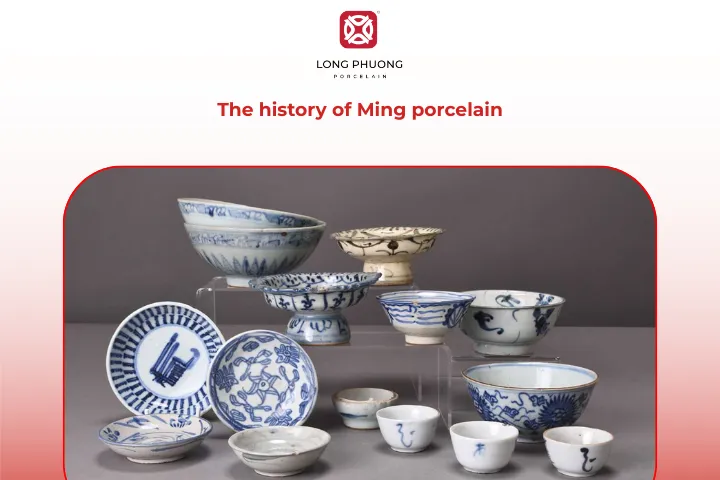
See more: Vietnamese ceramics: A timeless art in Southeast Asia
3. The variety of Ming porcelain shapes
Covered bowls had two types:
- 1 – wide, slightly flared mouth, curved walls, low recessed base
- 2 – straight mouth, slightly curved walls, low recessed base

Bowls had five types:
- 1 – Flared mouth, curved sides, deep interior, low recessed base (most common).
- 2 – Wide flared mouth with notched rim, sloping sides, small, low recessed base
- 3 – Flared mouth turned outward, curved walls, low recessed base
- 4 – Flared mouth, slightly curved sides, shallow interior, low base
- 5 – Straight mouth, curved sides, deep interior, slightly high recessed base
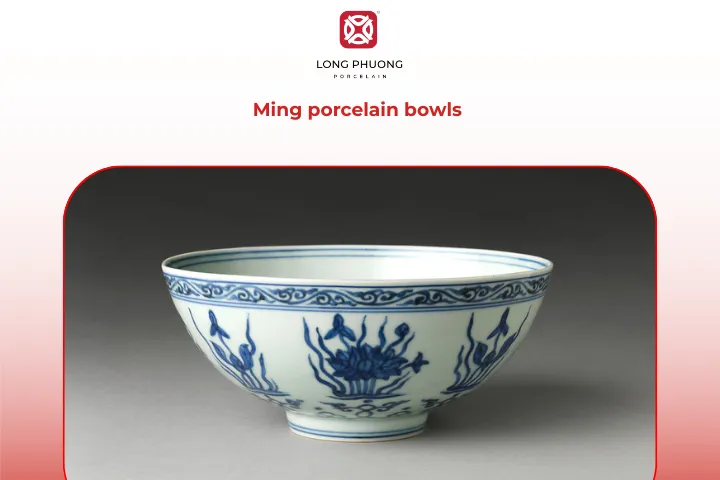
Vases had six types:
- 1 -Small flared mouth, narrow neck, spherical or flattened body, recessed or flat base
- 2 -Straight or slightly flared mouth, swollen shoulder, bell-shaped body, flat or recessed base, unglazed
- 3 – Circular mouth (wide or narrow), flattened spherical body, recessed base without feet
- 4 – Circular mouth, flattened round body with multiple raised segments forming a gourd shape, lid shaped as a six-petal flower or flattened round with raised decoration
- 5 – Slanted flared mouth, slightly tall neck, gourd-shaped body, recessed base without feet
- 6 – Flared mouth, tall cylindrical neck, slightly horizontal shoulder, low bell-shaped body, wide, low, recessed base, unglazed
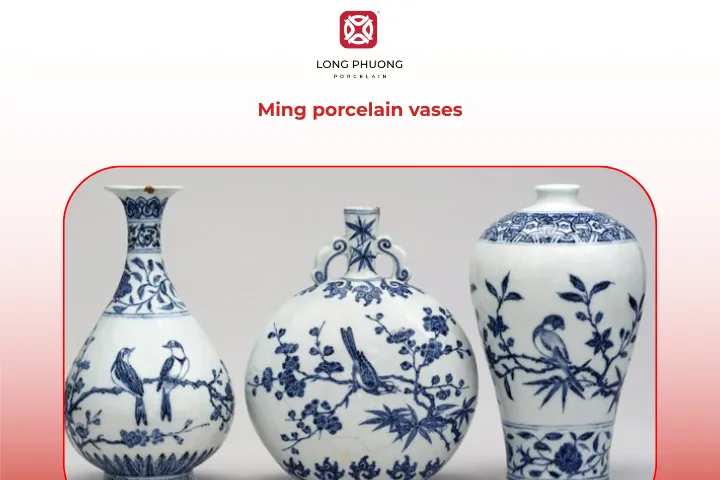
Cups had three types:
- 1 – Flared mouth, curved walls, low recessed base
- 2 – Straight mouth, slightly curved walls, low base, lid shaped like a hemispherical dome with a flat, round knob
- 3 – Flared mouth, straight walls, high flared hollow base

Plates had six types:
- 1 – Flared mouth, curved sides, low recessed base
- 2 – Slanted flared mouth, curved broken sides, shallow interior, low recessed base
- 3 – Wide flared mouth, sloping sides, wide, low recessed base
- 4 – Basin-like shape, slanted flared mouth, curved outward sides, deep interior, low recessed base
- 5 – Small square plate with beveled sides, sloping walls, shallow interior, and low and recessed base
- 6 – A set of one octagonal plate in the center with eight pentagonal plates around it.

Boxes had seven types:
- 1 – Rectangular, two-piece construction.
- 2 – Flat round, two-piece, low concave base, domed lid.
- 3 – Flat round, two-piece, pumpkin shape or with floral/animal relief decoration.
- 4 – Round, domed lid, raised turtle, snake, shrimp, or crab designs.
- 5 – Round, two-tiered domed lid with floral relief and movable top knob.
- 6 – Octagonal, lid divided into 8 trapezoid sections with flower relief, knob round or shaped like a toad.
- 7 – Animal-shaped, two-piece: body forms legs and belly, lid forms head and back.

Figurines had many types, most notable are multi-colored glazed figures of children holding lotus flower vases, standing on square bases, with tied head bows, smiling faces, wearing detailed clothes and aprons decorated with flowers.
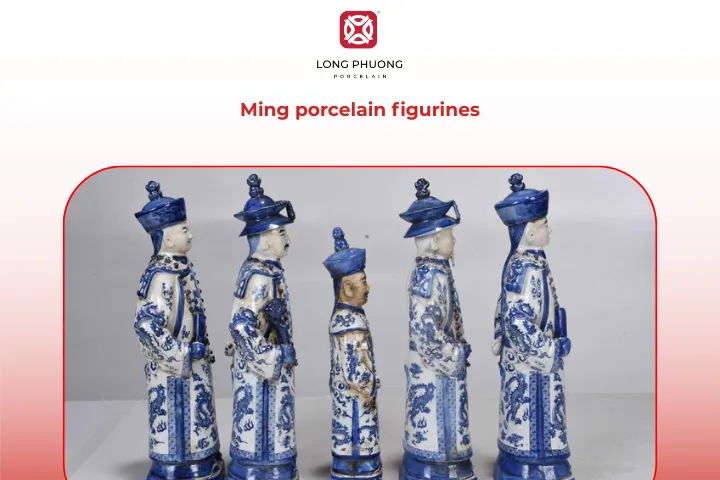
4. Unique decorative patterns of Ming porcelain
4.1. Human figure patterns
The figures were depicted in everyday activities and casual attire, including a standing figure wearing a long robe, an archer, a young woman, a musician, and a person holding a fan in front of a smoking incense burner.

4.2. Animal patterns
- Mythical animals: Dragons are the most frequently depicted spirit beasts. Five-clawed dragons appear inside circular panels on the outer walls of multicolored white-glazed jars, often surrounded by waves.
- Feathered animals: This group includes phoenixes, cranes, storks, ducks, peacocks, parrots, chickens, and more.
- Insects: On white-glazed vases decorated with chrysanthemums, dragonflies are painted on the outer rim of blue-and-white plates featuring chrysanthemum motifs.
- Aquatic and amphibious animals: Fish are sometimes molded in relief on black-brown lidded boxes with waves, while the lids of brown-glazed boxes may feature raised turtles, snakes, shrimp, and crabs.
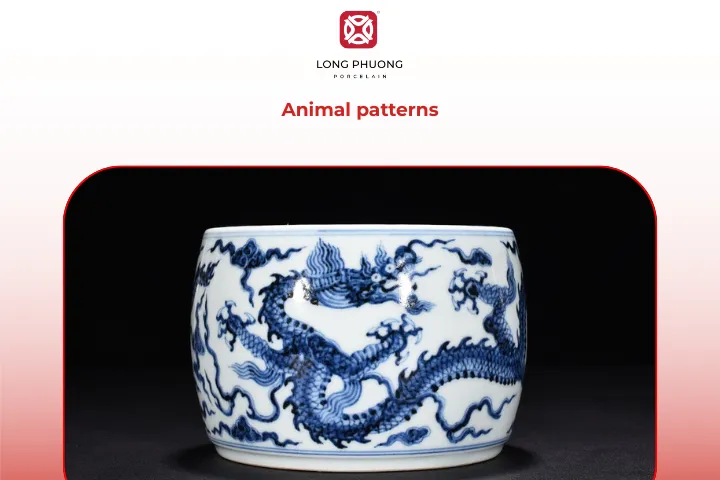
4.3. Border patterns
Decorative bands are often divided into sections around the rim, shoulder, or base of ceramic pieces. Lotus petal bands are among the most commonly used patterns for these borders.
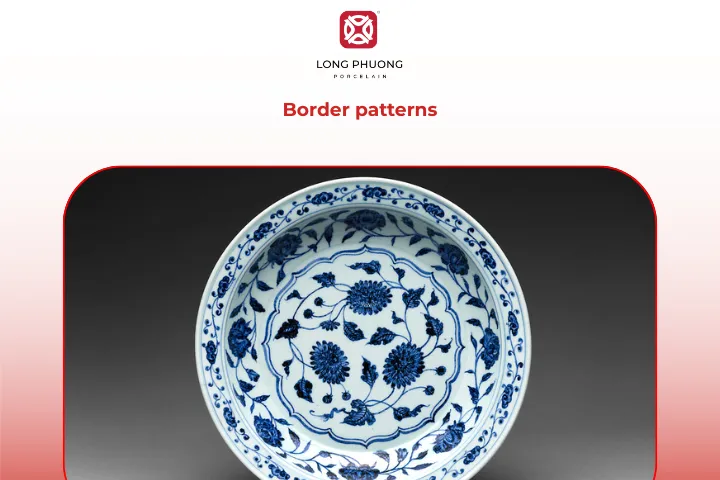
4.4. Floral and plant patterns
Decorative designs often draw inspiration from nature, such as fruits, plants, and flowers. The lotus, in particular, is the most frequently used motif.
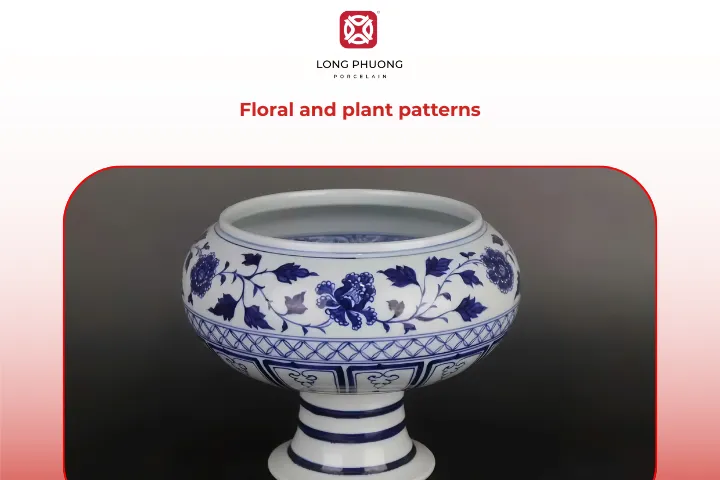
5. Main types of glazes in Ming porcelain
- Blue glaze: Blue designs are painted under a white glaze and fired in the first kiln, then combined with multicolored painting in a second firing on multicolored bottles.
- Multicolor glaze: Beyond the high-fire blue glaze in the first firing, Ming artisans also applied multicolor glazes in the second firing, including gray-green, red, and yellow, often seen on jars and bottles.
- Yellow glaze: Deep yellow tones are used on jar bases, plates, and storage jars, while lighter shades appear on lidded bottles and figurines.
- Red glaze: A brownish-red glaze is applied to plates, while a lighter red is used on multicolored vases. The use of red glaze reflects the peak of porcelain glazing techniques in Chinese ceramic history.
- Green glaze: A rough green glaze is applied to jars, covers, bottles, and boxes, and it also appears on bowls and lidded bottles.
- Celadon glaze: Often coats both the inside and outside of plates.
- White glaze: Applied to cups, jars, vases, bowls, plates, and basins.
- Gray glaze: Used on plates with multicolor designs.
- Brown glaze: Applied to the exterior of lidded boxes.
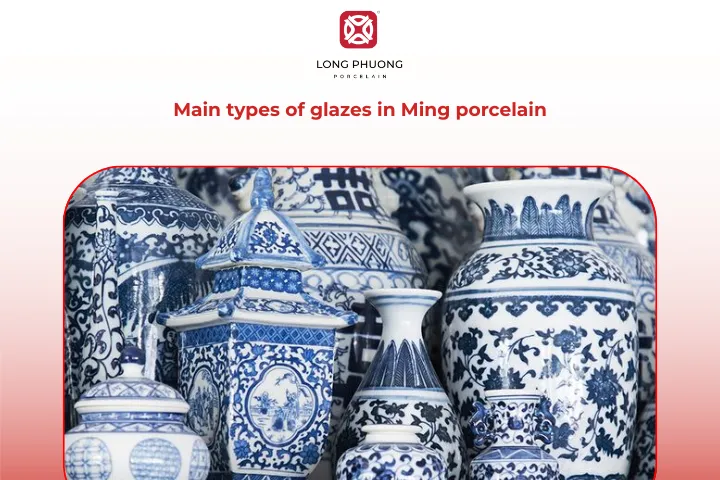
6. How to identify authentic Ming porcelain
6.1. Material quality and body composition
Authentic Ming porcelain is made from kaolin clay mixed with a high concentration of petuntse, creating a smooth, slightly heavy, and translucent body. Hold the piece up to light to check for translucency, look for a warm, creamy white color, and feel the surface for a smooth yet substantial texture.

6.2. Glaze characteristics
Ming glazes are typically thin, evenly applied, and may show a subtle “orange peel” texture under magnification. Over centuries, some pieces develop natural crazing, a network of tiny cracks. These imperfections should appear irregular, not artificially uniform.
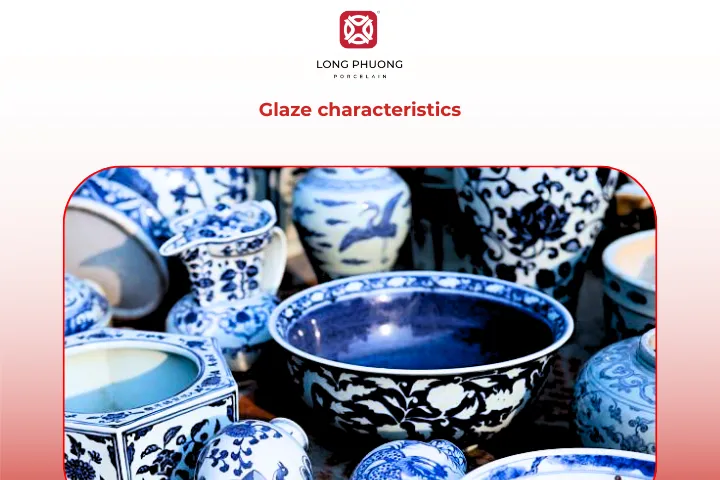
6.3. Blue underglaze decoration
Blue-and-white porcelain, or “qinghua,” is the most iconic Ming Dynasty porcelain. Authentic Ming porcelains display natural color variation, with darker spots where pigment is concentrated during firing. Brush strokes should be fluid and confident, showing artistic spontaneity, while the blue tone varies depending on the period.
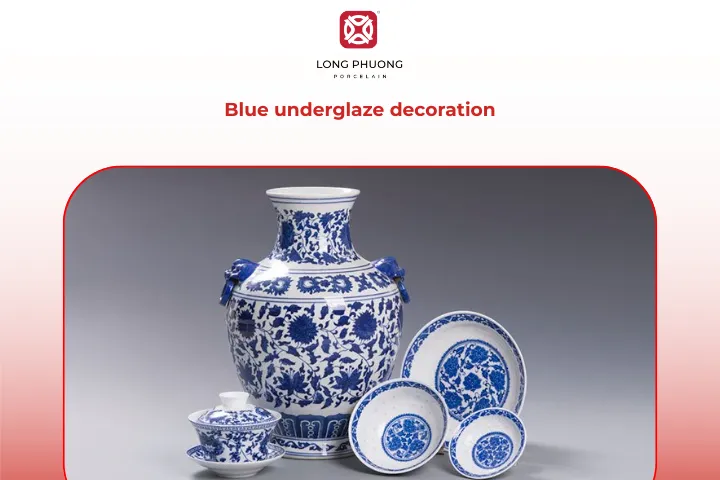
6.4. Reign marks and base features
The base provides key clues to authenticity. Some Ming Dynasty porcelains have six-character reign marks arranged in two vertical columns, with natural calligraphy. Many Ming porcelains feature an unglazed rim that has oxidized to reddish-brown over time, and the foot ring is well-defined and carefully finished, often reflecting the style of the specific reign period.
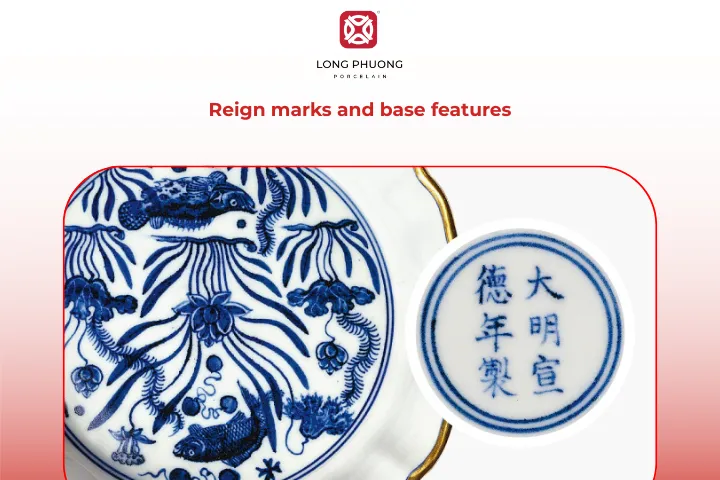
7. Video tutorial on how to identify genuine Minh porcelain
See more: Japanese bizen pottery: the beauty of fire and clay tradition
8. Preserving and caring for Ming porcelain
8.1. Safe display practices
Valuable Ming presentation porcelain should be kept behind glass to protect it from dust, particles, and accidental knocks. Always place a felt, leather, or soft fabric mat underneath items to absorb vibrations, and use non-metallic display supports like plastic for plates or tableware to prevent scratches or tarnish.

8.2. Ideal environmental conditions
Avoid direct sunlight and high humidity. Maintain a steady temperature around 20°C (68°F) and relative humidity near 50%. UV rays can fade painted over-glaze designs, so consider UV filters on windows or display cases for particularly delicate Ming porcelain.
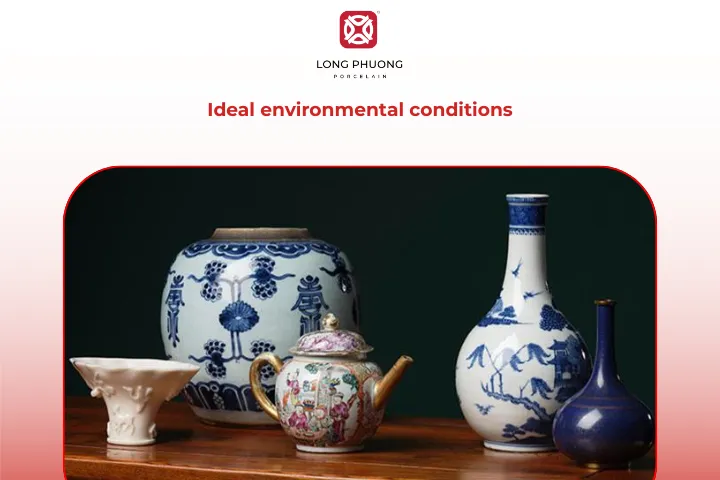
8.3. Proper handling
Handle Ming porcelain as little as possible and always with clean hands. Hold strong parts of the body rather than handles or fragile extremities. Remove loose pieces like lids before moving items, and never use adhesives to keep them in place. Wrap each piece separately for storage or transport.
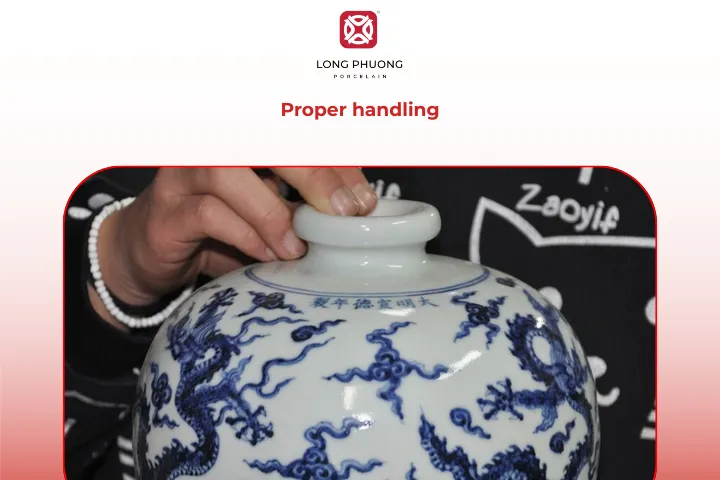
8.4. Cleaning and maintenance
Clean Ming porcelain only when necessary. Light dusting with a lint-free cloth is safe, but avoid abrasive sponges, harsh chemicals, or rubbing over-glaze painting and gilding. For heavily soiled or stained items, consult a conservator to prevent damage.
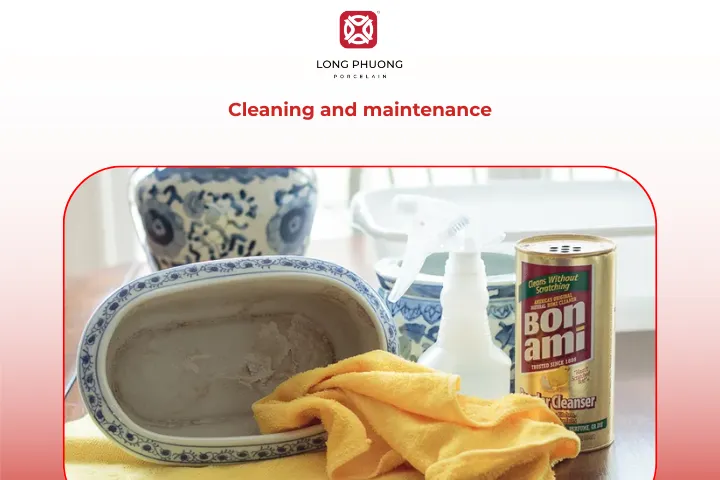
9. Long Phuong Porcelain – A prestigious manufacturer of high-end porcelain
If you are interested in porcelain products, visit Long Phuong Porcelain. Long Phuong Porcelain is a trusted producer of fine porcelain with over 20 years of experience. Our products are available nationwide, and we have the capacity to produce up to 100,000 items per day. At Long Phuong, customers are at the heart of everything we do, guided by our motto: “satisfy every customer from arrival to departure.” We aim to bring our approachable, high-quality products to consumers both in Vietnam and abroad.
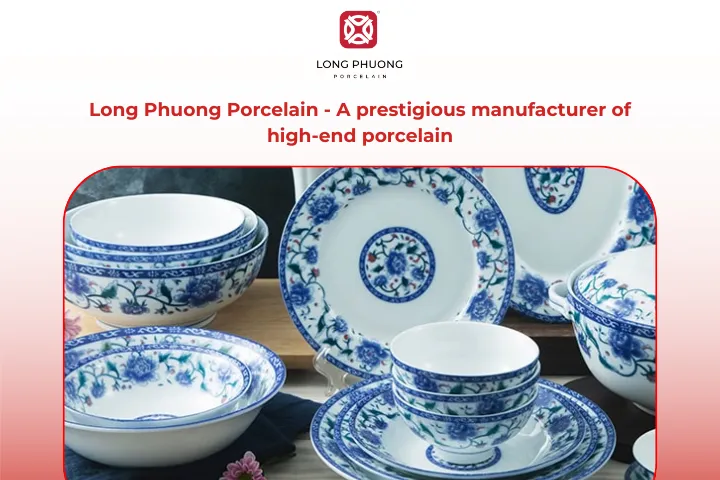
10. Conclusion
Ming porcelain is a remarkable example of Chinese artistry and craftsmanship. Its beauty and historical significance have made it admired around the world. By appreciating its artistry and taking proper care, these porcelain pieces can continue to inspire and captivate for generations to come.
Related Posts
CEO of Long Phuong Group Joint Stock Company, with more than 20 years of exploration and research to obtain the best formulas and professional experience, Long Phuong Porcelain has produced more than 400 designs of all kinds of household porcelain, Significant contributions to Vietnam's ceramic industry.
 Vietnam
Vietnam
